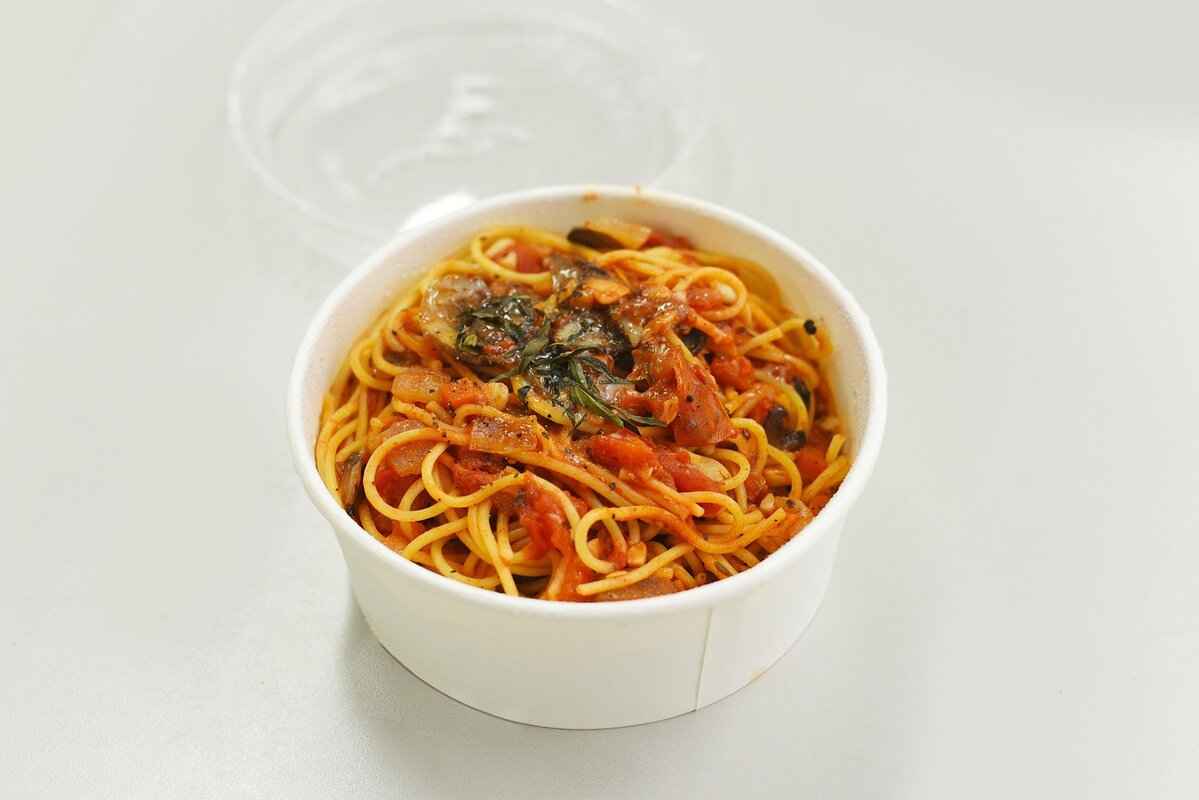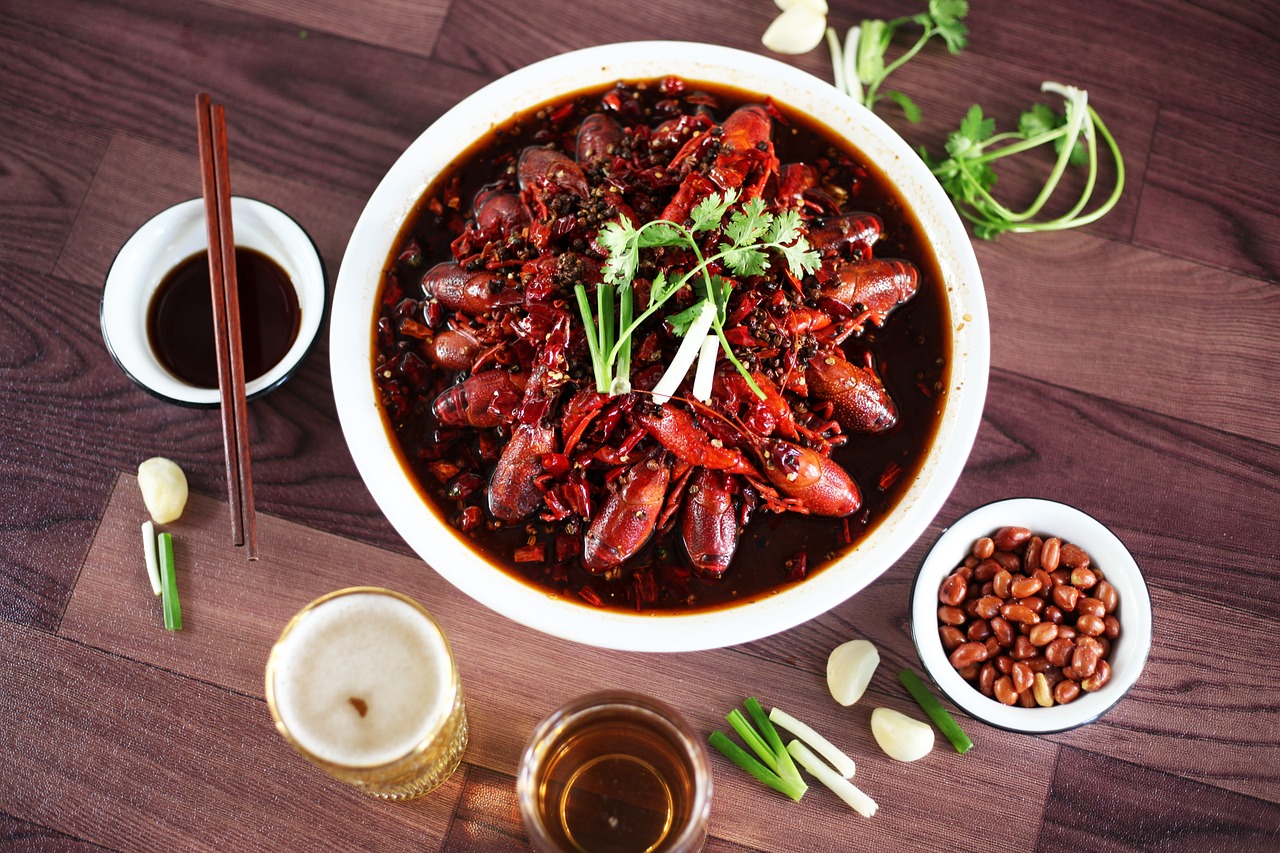Asian fusion cuisine represents an exciting culinary landscape where traditional Asian flavors meet contemporary dietary preferences, particularly in the realm of plant-based and vegan dishes. This article dives into the dynamic world of Asian fusion, showcasing how creative adaptations can transform classic recipes into healthy, sustainable options that cater to a growing audience of health-conscious eaters.
Asian fusion cuisine is a delightful blend of various culinary traditions from Asia, resulting in innovative dishes that appeal to a global palate. Originating from the desire to explore and merge different cooking styles, it emphasizes creativity and experimentation. This fusion not only reflects the diverse cultures within Asia but also adapts to modern tastes and dietary needs, making it a significant part of contemporary dining.
Plant-based cooking enriches Asian fusion by introducing a variety of textures and flavors. By incorporating fresh vegetables, grains, and legumes, traditional recipes can be transformed into healthier alternatives. This approach not only caters to vegan and vegetarian diets but also promotes sustainability and environmental consciousness.
To create delicious plant-based Asian fusion meals, understanding key ingredients is essential. Some staples include:
- Tofu: A versatile protein source that absorbs flavors well.
- Tempeh: Fermented soy product packed with nutrients.
- Rice and Noodles: Essential carbohydrates that serve as a base for many dishes.
- Spices: Such as ginger, garlic, and chili, which elevate flavors.
Tofu and tempeh are not only versatile protein sources but also rich in essential nutrients. They can be marinated and cooked in various ways, allowing them to absorb the rich flavors typical of Asian cuisine. For instance, marinated tofu can be grilled or stir-fried, offering a satisfying texture and taste that complements many dishes.
Fresh herbs and spices are vital in Asian cooking. Popular choices like cilantro, basil, and ginger not only enhance the taste but also provide health benefits. Incorporating these ingredients into plant-based dishes can significantly elevate the overall flavor profile, making the meal more enjoyable and aromatic.
Some beloved plant-based Asian fusion recipes include:
- Vegan Sushi Rolls: Filled with fresh vegetables and avocado.
- Thai Green Curry: Made with coconut milk and an array of vegetables.
- Stir-Fried Noodles: Tossed with tofu and a medley of colorful veggies.
Asian fusion vegan cuisine offers numerous health benefits. By incorporating plant-based ingredients, these dishes are often:
- Rich in Nutrients: Packed with essential vitamins and minerals.
- Lower in Saturated Fats: Beneficial for heart health and weight management.
Creating your own Asian fusion plant-based meals can be both fun and rewarding. Here are some practical tips:
- Experiment with Traditional Recipes: Substitute meat with plant-based options in your favorite dishes.
- Combine Flavors and Techniques: Merge elements from different Asian cultures to create unique culinary experiences.
By embracing the vibrant world of Asian fusion cuisine, you can enjoy delicious meals that are both satisfying and aligned with modern dietary preferences. With a focus on plant-based ingredients, the possibilities are endless!

What is Asian Fusion Cuisine?
Asian fusion cuisine is an exciting culinary movement that merges diverse elements from various Asian culinary traditions, resulting in innovative and flavorful dishes that cater to a global audience. This unique blend not only celebrates the rich heritage of Asian cooking but also adapts to modern dietary preferences, particularly in the realm of plant-based and vegan diets.
Originating in the late 20th century, Asian fusion cuisine has gained popularity as chefs began to experiment with traditional recipes by incorporating ingredients and techniques from different cultures. This culinary approach allows for the creation of dishes that are not only visually appealing but also packed with a variety of flavors and textures. The significance of Asian fusion cuisine in contemporary dining lies in its ability to promote inclusivity and creativity, allowing individuals from different backgrounds to experience a harmonious blend of tastes.
Why is Asian Fusion Cuisine Significant Today?
- It fosters culinary innovation by encouraging chefs to think outside the box.
- It reflects the globalized world we live in, where cultural exchanges are frequent.
- It provides a platform for dietary adaptability, catering to the growing demand for plant-based options.
Asian fusion cuisine is particularly relevant in the context of plant-based and vegan diets. By incorporating a variety of vegetables, grains, and legumes, traditional Asian recipes can be transformed into healthier, sustainable options. For instance, dishes that traditionally rely on meat can be reimagined using tofu or tempeh, which not only provide essential protein but also absorb the vibrant flavors characteristic of Asian cooking.
How Does Plant-Based Cooking Revolutionize Asian Fusion?
Plant-based cooking enhances Asian fusion by introducing a plethora of flavors and textures. The use of fresh ingredients such as seasonal vegetables, aromatic herbs, and spices elevates the overall dining experience. Chefs are increasingly using ingredients like miso, coconut milk, and various Asian sauces to create rich, savory plant-based dishes that resonate with both traditional and modern palates.
What Are Key Ingredients in Plant-Based Asian Fusion Dishes?
| Ingredient | Description |
|---|---|
| Tofu | A versatile protein source that absorbs flavors well, making it ideal for various dishes. |
| Tempeh | A fermented soy product that is rich in protein and has a nutty flavor, perfect for stir-fries. |
| Rice Noodles | Gluten-free and light, these noodles serve as a great base for many fusion dishes. |
| Fresh Herbs | Herbs like cilantro, basil, and mint add brightness and freshness to dishes. |
Moreover, the incorporation of fresh herbs and spices plays a crucial role in enhancing the flavor profile of plant-based Asian fusion meals. Ingredients such as ginger, garlic, and chili peppers not only provide depth but also offer numerous health benefits, making these dishes both delicious and nutritious.
In conclusion, the evolution of Asian fusion cuisine, particularly in the context of plant-based and vegan dishes, highlights the endless possibilities in culinary creativity. By embracing traditional flavors and adapting them to modern dietary needs, chefs are paving the way for a new era of dining that is both inclusive and innovative.

How Does Plant-Based Cooking Enhance Asian Fusion?
Plant-based cooking is revolutionizing the culinary landscape, particularly in the realm of Asian fusion cuisine. This innovative approach not only preserves the essence of traditional Asian flavors but also introduces a plethora of health benefits, making meals more sustainable and accessible to a wider audience. By focusing on the use of vegetables, grains, and legumes, plant-based cooking breathes new life into classic recipes, transforming them into dishes that are both delicious and nourishing.
At its core, plant-based cooking emphasizes the use of whole, unprocessed ingredients, which can significantly enhance the flavors and textures of Asian fusion dishes. By incorporating a diverse range of vegetables, chefs can create vibrant plates that not only look appealing but also offer a delightful explosion of flavors. For example, the addition of bell peppers, bok choy, and shiitake mushrooms can elevate a simple stir-fry into a colorful and nutritious meal.
Moreover, the use of grains such as quinoa, brown rice, and farro allows for a heartier base in many dishes, providing essential nutrients and fiber that contribute to overall health. These grains can be paired with traditional Asian sauces and spices, creating a harmonious blend of flavors that appeals to both the palate and the body.
Legumes, such as chickpeas and edamame, serve as excellent protein sources in plant-based Asian fusion cooking. They not only enhance the nutritional profile of dishes but also add unique textures that can mimic the mouthfeel of meat. For instance, a chickpea curry can replace traditional meat-based curries while still delivering a satisfying and hearty experience.
| Ingredient | Benefits |
|---|---|
| Vegetables | Rich in vitamins, minerals, and antioxidants |
| Grains | High in fiber and essential nutrients |
| Legumes | Excellent source of plant-based protein |
In addition to the nutritional advantages, plant-based cooking promotes sustainability. As more people become aware of the environmental impact of their food choices, plant-based Asian fusion dishes offer a delicious way to reduce one’s carbon footprint. By focusing on plant-derived ingredients, chefs can create meals that are not only good for the body but also for the planet.
Furthermore, the versatility of plant-based ingredients allows for endless creativity in the kitchen. Chefs can experiment with various cooking techniques, such as steaming, grilling, or stir-frying, to bring out the best in each ingredient. This adaptability ensures that there is always something new to explore in the world of Asian fusion cuisine.
Ultimately, plant-based cooking enhances Asian fusion by transforming traditional recipes into healthier, more sustainable options that cater to modern dietary preferences. As the culinary scene continues to evolve, embracing plant-based ingredients will not only enrich our meals but also contribute to a more sustainable future.
Key Ingredients in Plant-Based Asian Fusion Dishes
Creating delicious plant-based Asian fusion meals requires a deep understanding of the essential ingredients that define this vibrant culinary style. By combining traditional flavors with modern dietary preferences, cooks can elevate their dishes to new heights. This section will explore some of the key components that are crucial for crafting these innovative meals.
When it comes to plant-based Asian fusion cuisine, several staples play a pivotal role. Here are some of the most important ingredients to consider:
- Tofu: Known for its versatility, tofu is a staple in many Asian dishes. It can absorb flavors well and can be grilled, stir-fried, or blended into soups. Tofu is not only a great source of protein but also provides essential amino acids.
- Tempeh: This fermented soy product is rich in protein and offers a nutty flavor. Its firm texture makes it perfect for grilling or sautéing, allowing it to take on various marinades and sauces.
- Rice and Noodles: Both rice and various types of noodles serve as excellent bases for Asian fusion dishes. Whole grain options like brown rice or soba noodles add a nutritional boost.
- Vegetables: Fresh vegetables such as bok choy, bell peppers, and carrots not only add color but also bring essential vitamins and minerals to the table. They can be stir-fried, steamed, or used raw in salads.
- Herbs and Spices: Fresh herbs like cilantro, basil, and mint, along with spices such as ginger, garlic, and chili, are crucial for adding depth and flavor to dishes.
Spices are the heart of Asian cuisine and play a significant role in enhancing the flavors of plant-based dishes. Here’s how:
- Ginger: This aromatic root adds warmth and a hint of spice, making it a favorite in many Asian recipes.
- Garlic: Known for its strong flavor, garlic is a foundational ingredient that enhances the overall taste of dishes.
- Chili Peppers: For those who enjoy heat, chili peppers can be used fresh or dried to add a kick to any meal.
- Five-Spice Powder: A blend of star anise, cloves, Chinese cinnamon, Sichuan pepper, and fennel seeds, this spice mix adds complexity and depth to dishes.
Using fresh ingredients in plant-based Asian fusion cooking not only enhances the flavor but also ensures that the dishes are packed with nutrients. Fresh vegetables and herbs provide a burst of flavor and texture that dried or processed ingredients simply cannot replicate. Moreover, fresh produce is often more vibrant and visually appealing, making the dish more inviting.
Experimenting with these key ingredients can lead to exciting new dishes. Here are some tips:
- Mix and Match: Combine different vegetables and proteins to create unique stir-fries or salads.
- Try Different Cooking Techniques: Explore various methods like steaming, grilling, or sautéing to discover new flavors and textures.
- Incorporate Fusion Elements: Blend traditional Asian flavors with ingredients from other cuisines, such as using quinoa in place of rice or adding avocado for creaminess.
By understanding and utilizing these essential ingredients, anyone can create delicious, innovative plant-based Asian fusion meals that are both satisfying and nutritious.
Exploring Tofu and Tempeh in Asian Cuisine
Tofu and tempeh are not just staples in Asian cuisine; they are also nutrient-rich powerhouses that offer versatile options for those embracing plant-based diets. With their unique textures and ability to absorb flavors, these soy-based products can be transformed into a variety of delicious dishes that resonate with the rich tapestry of Asian culinary traditions.
What Nutritional Benefits Do Tofu and Tempeh Offer?
- High-Quality Protein: Both tofu and tempeh are excellent sources of protein, providing essential amino acids that are crucial for muscle repair and overall health.
- Rich in Vitamins and Minerals: They are packed with vitamins such as B1, B2, and E, as well as minerals like calcium, magnesium, and iron, which are vital for maintaining healthy bodily functions.
- Healthy Fats: Tempeh, in particular, is a source of healthy fats, which can help support heart health when consumed in moderation.
How Can Tofu and Tempeh Be Infused with Asian Flavors?
Infusing tofu and tempeh with Asian flavors is an art that can elevate any dish. Here are some popular methods:
- Marination: Marinating tofu or tempeh in soy sauce, sesame oil, and ginger can enhance their flavor profile significantly. A simple marinade can make a world of difference.
- Stir-Frying: Quick stir-frying with fresh vegetables and a splash of soy sauce or teriyaki sauce allows the proteins to soak in the flavors while retaining their texture.
- Grilling: Grilling tofu or tempeh can impart a smoky flavor that pairs beautifully with Asian-inspired sauces, making it a fantastic option for summer barbecues.
What Are Some Popular Dishes Featuring Tofu and Tempeh?
Tofu and tempeh can be found in numerous beloved Asian dishes, such as:
- Mapo Tofu: A spicy Szechuan dish that highlights the soft texture of tofu, often served with rice.
- Tempeh Satay: Grilled tempeh skewers served with a rich peanut sauce, offering a delightful balance of flavors.
- Tofu Stir-Fry: A colorful mix of vegetables and tofu stir-fried in a savory sauce, perfect for a quick weeknight dinner.
How to Incorporate Tofu and Tempeh into Your Meals?
Incorporating tofu and tempeh into your meals can be both easy and enjoyable:
- Substitution: Replace meat with tofu or tempeh in your favorite recipes to create a plant-based version without sacrificing flavor.
- Experimentation: Don’t hesitate to experiment with different cooking methods and seasonings to discover new flavor combinations that excite your palate.
- Pairing: Pair tofu and tempeh with grains like rice or quinoa and a variety of vegetables to create balanced and nutritious meals.
In conclusion, tofu and tempeh are not only versatile ingredients in Asian cuisine but also offer numerous health benefits. By exploring their nutritional advantages and experimenting with various cooking techniques, anyone can create delicious and satisfying plant-based meals that celebrate the rich flavors of Asian culinary traditions.
Utilizing Fresh Herbs and Spices for Flavor
In the realm of Asian cooking, fresh herbs and spices play an indispensable role in elevating the flavors of plant-based dishes. These ingredients not only enhance taste but also contribute to the overall health benefits of meals. In this section, we will explore some of the most popular herbs and spices, including cilantro, basil, and ginger, and discuss how they can transform your culinary creations.
- Cilantro: Known for its bright, citrusy flavor, cilantro is a staple in many Asian cuisines. It adds a refreshing note to dishes such as Vietnamese pho and Thai curries. Beyond its flavor, cilantro is rich in antioxidants and has been associated with various health benefits, including anti-inflammatory properties.
- Basil: Particularly popular in Thai cuisine, basil comes in several varieties, with Thai basil being the most prominent. Its sweet and slightly spicy flavor complements stir-fries, salads, and soups. Basil is also known for its antibacterial properties and is a source of essential vitamins.
- Ginger: This versatile root adds warmth and depth to dishes. Its zesty flavor is essential in many Asian recipes, from stir-fries to marinades. Ginger is celebrated not only for its taste but also for its digestive benefits and anti-nausea effects.
Incorporating these fresh herbs and spices into your plant-based meals can significantly enhance their flavor profiles. For instance, adding a handful of cilantro to a black bean salad or garnishing a coconut curry with fresh basil can elevate the entire dish. The aromatic qualities of these herbs create a sensory experience that is both satisfying and nourishing.
Moreover, using fresh ingredients ensures that you are maximizing the nutritional value of your meals. Fresh herbs are often more potent in vitamins and minerals than dried alternatives, making them a healthier choice. For example, a tablespoon of fresh cilantro provides a good amount of vitamin K, which is essential for bone health.
When preparing plant-based Asian dishes, consider the following tips for utilizing fresh herbs and spices:
- Balance Flavors: Aim for a balance of flavors by combining herbs and spices. For instance, pairing ginger with garlic can create a robust base for stir-fries.
- Fresh vs. Dried: Whenever possible, use fresh herbs instead of dried ones. Fresh herbs bring a vibrant flavor that dried herbs cannot replicate.
- Garnishing: Use fresh herbs as a garnish to enhance presentation and add a burst of flavor just before serving.
In summary, fresh herbs and spices are vital components of Asian cooking, especially in plant-based and vegan dishes. By incorporating ingredients like cilantro, basil, and ginger, you not only enhance the taste but also boost the nutritional profile of your meals. Experimenting with these flavors can lead to delightful culinary discoveries, making your plant-based cooking journey both exciting and rewarding.
Popular Plant-Based Asian Fusion Dishes
In the realm of culinary innovation, plant-based Asian fusion dishes stand out as a vibrant and exciting option for food enthusiasts. This section delves into a selection of popular recipes that beautifully blend traditional Asian flavors with contemporary vegan practices, showcasing how beloved dishes can be reimagined without compromising taste or authenticity.
- Vegan Sushi Rolls: Traditional sushi is redefined with creative fillings like avocado, cucumber, and marinated tofu. These rolls not only retain the essence of sushi but also offer a fresh, plant-based twist.
- Jackfruit Tacos: This innovative dish merges the flavors of Asian cuisine with Mexican street food. Using jackfruit as a meat substitute, these tacos are seasoned with soy sauce, ginger, and garlic, delivering a savory punch.
- Thai Green Curry with Tofu: A classic Thai green curry can be easily made vegan by substituting chicken with tofu and incorporating a variety of vegetables. The rich coconut milk base combined with fresh herbs creates a delightful harmony of flavors.
- Vegetable Pad Thai: This iconic dish can be transformed into a plant-based delight by using rice noodles, a mix of colorful vegetables, and a tangy tamarind sauce. Adding peanuts and lime elevates the dish further.
- Chickpea Biryani: A fusion of Indian and Asian flavors, this biryani incorporates chickpeas, aromatic spices, and basmati rice. It’s a hearty meal that’s both satisfying and nutritious.
Creating these plant-based Asian fusion dishes involves a few key techniques:
- Incorporating Fresh Ingredients: Using seasonal vegetables and herbs enhances the flavor profiles of these dishes. Ingredients like cilantro, basil, and ginger are essential for authenticity.
- Experimenting with Textures: The use of various textures, such as crispy tofu or crunchy vegetables, adds depth to the dishes, making each bite an experience.
- Balancing Flavors: Achieving a balance between sweet, salty, sour, and spicy is crucial in Asian cuisine. Utilizing ingredients like soy sauce, lime juice, and chili paste can help in this regard.
Opting for plant-based Asian fusion dishes not only caters to vegan diets but also promotes a healthier lifestyle. These dishes are typically rich in nutrients and antioxidants, while being lower in saturated fats. They can support weight management and overall well-being.
Additionally, the versatility of plant-based ingredients allows for endless creativity in the kitchen. Whether you’re a seasoned chef or a home cook, experimenting with these recipes can lead to delicious and satisfying meals that everyone can enjoy.
In conclusion, popular plant-based Asian fusion dishes are a testament to the adaptability of traditional recipes. By embracing the use of fresh ingredients and innovative techniques, these meals not only satisfy the palate but also align with modern dietary preferences.

What Are the Health Benefits of Asian Fusion Vegan Cuisine?
Asian fusion vegan cuisine is not just a culinary trend; it embodies a lifestyle choice that prioritizes health and well-being. By merging traditional Asian flavors with plant-based ingredients, this cuisine offers a wealth of nutritional benefits that cater to a diverse audience. This section will explore the various health advantages of incorporating vegan options into your diet, emphasizing how these dishes promote overall wellness.
One of the most significant advantages of Asian fusion vegan cuisine is its abundance of nutrients. Dishes often feature a variety of vegetables, legumes, and whole grains that are packed with essential vitamins and minerals. For instance, ingredients like bok choy, spinach, and kale are rich in vitamins A, C, and K, which are vital for maintaining healthy skin and boosting the immune system. Additionally, many plant-based foods are high in antioxidants, which help combat oxidative stress and reduce the risk of chronic diseases.
Asian fusion vegan cuisine is typically lower in saturated fats and calories compared to traditional meat-based dishes. By substituting animal proteins with plant-based options like tofu or seitan, individuals can enjoy meals that are not only delicious but also conducive to weight management and heart health. Studies have shown that diets rich in plant-based foods can lower cholesterol levels and reduce the risk of heart disease.
Incorporating fiber-rich ingredients such as brown rice, quinoa, and a variety of vegetables can significantly enhance digestive health. A diet high in fiber promotes regular bowel movements and helps prevent digestive disorders. Furthermore, many Asian fusion dishes utilize fermented foods like kimchi and miso, which are excellent for gut health due to their probiotic properties.
Plant-based diets are often associated with higher energy levels. The combination of complex carbohydrates from whole grains and the healthy fats found in nuts and seeds provides a sustained energy source throughout the day. This can lead to improved productivity and overall vitality, making Asian fusion vegan cuisine an excellent choice for those leading active lifestyles.
Choosing vegan options also aligns with sustainable eating practices. By reducing reliance on animal products, individuals can decrease their carbon footprint and promote environmental health. Many Asian fusion dishes emphasize seasonal and locally sourced ingredients, further supporting sustainability efforts. This conscious approach to eating not only benefits personal health but also contributes to the well-being of the planet.
Lastly, the act of preparing and enjoying Asian fusion vegan meals can promote emotional well-being. Cooking with fresh ingredients and experimenting with flavors can be a mindful practice that enhances one’s connection to food. This culinary exploration can foster a positive relationship with eating, encouraging individuals to savor their meals and appreciate the health benefits they provide.
In summary, Asian fusion vegan cuisine is a vibrant and healthy choice that offers numerous benefits. From being rich in nutrients and antioxidants to supporting sustainable eating practices, these dishes not only delight the palate but also contribute to overall well-being. By embracing this culinary style, individuals can enjoy a delicious and health-conscious lifestyle.
Rich in Nutrients and Antioxidants
In the realm of Asian fusion cuisine, plant-based ingredients play a pivotal role in enhancing not only the flavor but also the nutritional profile of dishes. This subsection delves into how these ingredients are rich in essential vitamins and minerals, making them a valuable addition to a balanced diet.
Understanding the importance of nutrients in our diet is crucial for maintaining overall health. Nutrients, including vitamins, minerals, and antioxidants, support various bodily functions, from boosting the immune system to promoting healthy skin. Plant-based ingredients, often abundant in Asian fusion dishes, provide a wealth of these essential nutrients.
Plant-based ingredients such as vegetables, legumes, and grains are packed with a variety of nutrients:
- Vitamins: Vegetables like bok choy and kale are rich in vitamins A, C, and K, which are vital for maintaining healthy vision, skin, and bone health.
- Minerals: Ingredients like tofu and edamame are excellent sources of calcium and iron, essential for bone health and preventing anemia.
- Antioxidants: Ingredients such as ginger and garlic contain antioxidants that help combat oxidative stress and inflammation in the body.
Antioxidants are crucial in protecting our cells from damage caused by free radicals. Consuming a diet rich in antioxidants can:
- Reduce the risk of chronic diseases such as heart disease and cancer.
- Improve overall immune function.
- Enhance skin health and slow down signs of aging.
Several plant-based ingredients commonly used in Asian fusion cuisine stand out for their nutrient density:
| Ingredient | Key Nutrients | Health Benefits |
|---|---|---|
| Tofu | Protein, Calcium, Iron | Supports muscle health and bone density. |
| Edamame | Protein, Fiber, Folate | Promotes digestive health and reduces cholesterol levels. |
| Bok Choy | Vitamins A, C, K | Supports immune function and bone health. |
| Brown Rice | Fiber, B Vitamins | Helps regulate blood sugar levels and supports energy metabolism. |
Incorporating these nutrient-rich ingredients into your meals can be both simple and delicious. Here are some tips:
- Experiment with different types of vegetables in stir-fries or salads.
- Use tofu or tempeh as a protein source in your favorite Asian dishes.
- Make use of fresh herbs and spices to enhance flavor and nutritional value.
By embracing the nutrient-dense ingredients found in Asian fusion cuisine, you not only indulge in delightful flavors but also contribute to a balanced diet that supports your health and well-being.
Lower in Saturated Fats and Calories
In recent years, the popularity of plant-based diets has surged, with many individuals turning to these eating patterns for their numerous health benefits. One of the most significant advantages of adopting a plant-based diet is its tendency to be . This article will delve into how Asian fusion vegan cuisine not only supports weight management but also promotes heart health.
Plant-based diets primarily consist of fruits, vegetables, legumes, nuts, and whole grains. These foods are naturally low in saturated fats, especially when compared to animal products. For instance, traditional Asian dishes that utilize tofu and tempeh as protein sources provide essential nutrients without the added saturated fats found in meat. This makes them an ideal choice for those aiming to reduce their fat intake while still enjoying flavorful meals.
Another advantage of Asian fusion vegan cuisine is its lower calorie content. Many plant-based ingredients are rich in fiber, which helps to promote satiety, making it easier to manage weight. For example, a dish featuring stir-fried vegetables with brown rice is not only filling but also low in calories compared to a meat-heavy alternative. By incorporating a variety of colorful vegetables, one can create satisfying meals that nourish the body without excessive calorie intake.
Heart health is a major concern for many individuals, and adopting a plant-based diet can significantly reduce the risk of cardiovascular diseases. Foods high in antioxidants, such as those found in Asian fusion dishes, help combat inflammation and oxidative stress. Ingredients like ginger, garlic, and various herbs not only enhance flavor but also contribute to heart health by improving circulation and lowering cholesterol levels.
- Tofu and Tempeh: Excellent sources of protein that can absorb flavors well.
- Whole Grains: Brown rice and quinoa provide essential nutrients and fiber.
- Fresh Vegetables: Bell peppers, broccoli, and bok choy add color and health benefits.
- Herbs and Spices: Cilantro, basil, and turmeric not only enhance taste but also offer health benefits.
Creating your own Asian fusion vegan meals can be an enjoyable experience. Start by experimenting with traditional recipes, substituting meat with plant-based options. For instance, use mushrooms or jackfruit in place of pork in a classic Vietnamese banh mi. Additionally, consider combining flavors from different cultures to create unique dishes that cater to your taste preferences.
In conclusion, the shift towards a plant-based diet, particularly through the lens of Asian fusion vegan cuisine, offers a delicious and nutritious way to support weight management and enhance heart health. By embracing the rich flavors and diverse ingredients of this culinary style, individuals can enjoy meals that are not only satisfying but also beneficial for their overall well-being.

How to Create Your Own Asian Fusion Plant-Based Meals?
Creating your own Asian fusion plant-based meals can be both fun and rewarding. This culinary adventure invites you to explore a variety of flavors and ingredients that reflect the rich tapestry of Asian cuisines. By blending traditional elements with modern plant-based practices, you can craft dishes that are not only delicious but also aligned with a sustainable lifestyle.
To embark on this exciting culinary journey, consider the following practical tips and techniques:
- Start with Familiar Dishes: Begin by selecting your favorite Asian recipes. Whether it’s a classic stir-fry or a comforting noodle soup, these familiar dishes serve as a great foundation for experimentation.
- Substitute with Plant-Based Proteins: Replace meat with plant-based alternatives such as tofu, tempeh, or seitan. These ingredients not only provide essential protein but also absorb flavors beautifully, enhancing the overall taste of your dishes.
- Explore Unique Flavor Combinations: Asian fusion is all about creativity. Try combining flavors from different Asian cultures. For example, mix Thai and Japanese elements by adding coconut milk to a miso soup for a creamy twist.
- Incorporate Fresh Herbs and Spices: Fresh herbs like cilantro, basil, and mint can elevate your dishes. Use spices such as ginger, garlic, and chili to add depth and complexity.
- Play with Textures: Consider the texture of your ingredients. Combine crispy vegetables with soft noodles or creamy sauces to create a satisfying mouthfeel. This can make a simple dish feel gourmet.
Additionally, don’t hesitate to experiment with cooking techniques. Techniques such as steaming, frying, or grilling can dramatically change the flavor profile of your ingredients. For instance, grilling vegetables can impart a smoky flavor that complements the freshness of herbs.
When diving into Asian fusion plant-based cooking, understanding key ingredients is essential:
- Grains: Incorporate grains like quinoa, brown rice, or noodles as a base for your meals. They can provide a hearty foundation that pairs well with sauces and toppings.
- Legumes: Beans and lentils are fantastic sources of protein and fiber. Try adding edamame or black beans for an extra nutritional boost.
- Fermented Foods: Ingredients like kimchi or pickled vegetables can add a tangy flavor that brightens up your dishes.
As you develop your skills in creating Asian fusion plant-based meals, remember that the key is to have fun and be open to experimentation. Cooking is an art, and each dish is an opportunity to express your creativity. Don’t be afraid to try new combinations and techniques, and most importantly, enjoy the process of making delicious meals that nourish both body and soul.
Experimenting with Traditional Recipes
Reimagining traditional recipes is not just a culinary trend; it is an exciting opportunity to embrace Asian fusion in a plant-based context. By substituting meat with plant-based options, you can create dishes that are not only delicious but also healthier and more sustainable. This section encourages you to explore and experiment with your favorite Asian recipes, transforming them into vibrant vegan meals.
Experimenting with traditional recipes allows you to honor cultural heritage while adapting to modern dietary preferences. It opens up a world of possibilities where you can explore new flavors and textures, making your meals both exciting and nutritious.
When reimagining your favorite Asian dishes, consider using the following plant-based alternatives:
- Tofu: A versatile protein source, tofu can absorb flavors from marinades and sauces, making it an excellent substitute in dishes like stir-fries and curries.
- Tempeh: Fermented and rich in protein, tempeh has a nutty flavor that works well in dishes such as satays and noodle bowls.
- Seitan: Known as wheat meat, seitan has a chewy texture that mimics meat, making it ideal for Asian-style dumplings and bbq dishes.
Incorporating fresh herbs and spices is key to elevating your plant-based Asian fusion meals. Consider these flavorful additions:
- Cilantro: Adds a refreshing taste to dishes like pho and spring rolls.
- Ginger: Provides warmth and depth to soups and stir-fries.
- Chili: Introduces heat, perfect for those who enjoy a spicy kick.
Here are some delicious plant-based Asian fusion recipes that you can start with:
- Vegan Pad Thai: Replace shrimp or chicken with tofu and load up on colorful vegetables.
- Chickpea Curry: Use chickpeas instead of meat for a hearty curry packed with spices.
- Vegetable Sushi Rolls: Fill sushi rolls with avocado, cucumber, and pickled vegetables for a fresh twist.
To ensure your experiments are successful, keep these tips in mind:
- Start Small: Begin by substituting one ingredient at a time in your favorite recipes.
- Balance Flavors: Aim for a balance of sweet, salty, sour, and umami to create well-rounded dishes.
- Be Open-Minded: Embrace the process and be willing to adjust flavors and textures as you go.
By reimagining traditional recipes and embracing plant-based options, you can create exciting and flavorful Asian fusion dishes that cater to both your taste buds and dietary preferences. Enjoy the journey of culinary creativity!
Combining Flavors and Techniques from Different Cultures
In the culinary world, the concept of combining flavors and techniques from different cultures has led to the creation of unique and exciting dishes. This is particularly true in the realm of Asian fusion cuisine, where the vibrant and diverse flavors of various Asian traditions come together to create something entirely new. By merging these elements, chefs and home cooks alike can explore a plethora of creative culinary experiences that not only tantalize the taste buds but also celebrate cultural diversity.
Asian fusion cuisine stands out because it embraces the rich culinary heritage of various Asian cultures, such as Chinese, Japanese, Thai, and Indian, while incorporating modern cooking techniques and ingredients. This blend allows for the creation of dishes that are not only flavorful but also reflective of a globalized world. For instance, consider the popular dish of Thai green curry made with traditional Indian spices or sushi rolls filled with spicy kimchi—each bite tells a story of cultural exchange.
One of the most exciting aspects of Asian fusion is the ability to experiment with various cooking techniques. For example, grilling, steaming, and stir-frying can all be incorporated into a single dish. Imagine a dish that features grilled teriyaki tofu served alongside steamed jasmine rice and topped with a spicy Szechuan sauce. This combination not only showcases the versatility of ingredients but also highlights the different cooking methods that enhance flavor and texture.
When merging flavors, the choice of ingredients plays a crucial role. Some key ingredients that work well in Asian fusion include:
- Tofu: A versatile protein that absorbs flavors beautifully.
- Rice noodles: Perfect for stir-fries and salads.
- Fresh herbs: Such as basil, cilantro, and mint, which add freshness and aroma.
- Spices: Incorporating spices like curry powder or five-spice powder can elevate the dish.
There are countless ways to create exciting Asian fusion dishes. Here are a few popular examples:
- Korean BBQ Tacos: A blend of Korean marinated meats served in soft tortillas, topped with kimchi.
- Thai Basil Pizza: Traditional pizza dough topped with Thai basil, mozzarella, and a spicy peanut sauce.
- Indian-Chinese Manchurian: Cauliflower or tofu balls in a tangy soy sauce-based gravy.
Creating your own Asian fusion meals can be a fun and rewarding experience. Start by taking your favorite dishes from different Asian cultures and consider how you can incorporate elements from another cuisine. For example, you could take a classic Japanese ramen and add Indian curry spices to the broth or use Chinese dumpling wrappers to create a Mexican empanada filled with spicy beans and vegetables.
Additionally, don’t be afraid to play with textures and flavors. Combining crunchy and creamy elements can create a delightful contrast in your dishes. For instance, adding crunchy fried onions to a creamy coconut curry can enhance the overall experience.
In conclusion, the art of combining flavors and techniques from different Asian cultures opens up a world of culinary possibilities. By embracing creativity and experimentation, anyone can create delicious and unique dishes that reflect the rich tapestry of Asian cuisine.
Frequently Asked Questions
- What is Asian fusion cuisine?
Asian fusion cuisine is a delightful blend of various Asian culinary traditions, merging flavors and techniques to create innovative dishes that cater to a global audience. It’s like taking the best of each culture and crafting a new, exciting experience for your taste buds!
- How does plant-based cooking enhance Asian fusion?
Plant-based cooking adds a burst of creativity and healthiness to Asian fusion dishes. By incorporating vibrant vegetables, wholesome grains, and hearty legumes, traditional recipes transform into nutritious meals that are both satisfying and sustainable. It’s like giving your favorite comfort food a healthy makeover!
- What are some key ingredients in plant-based Asian fusion dishes?
Essential ingredients include tofu, tempeh, fresh herbs, and a variety of spices. These staples not only provide protein but also infuse dishes with rich flavors, making each bite a flavorful journey through Asia!
- What health benefits can I expect from Asian fusion vegan cuisine?
Asian fusion vegan cuisine is packed with nutrients and antioxidants, promoting overall well-being. It’s generally lower in saturated fats and calories, making it a fantastic choice for those looking to maintain a healthy lifestyle or manage their weight.
- How can I create my own Asian fusion plant-based meals?
Creating your own Asian fusion meals is all about experimentation! Start by reimagining traditional recipes using plant-based alternatives, and don’t be afraid to mix flavors and techniques from different cultures to craft something uniquely yours!














